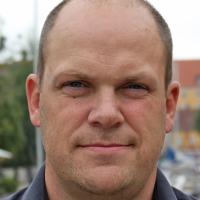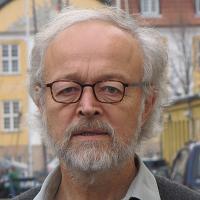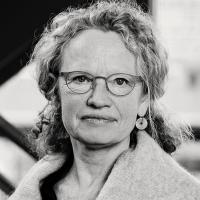Q&A: Three major UN meetings on future development
Negotiations on prioritisation and financing for development policy in the next 15 years are already in progress, but will culminate in three conferences:
- Financing for Development in Addis Ababa
UN member states will meet from 13-16 July in the capital of Ethiopia to negotiate decisive framework structures for financing future developments. A great deal has changed on the global scene since the first two Financing for Development (FfD) conferences, respectively in Monterrey in 2002 and in Doha in 2008. The financial crisis and subsequent political crises in the North, strengthened positions of the BRICS countries (Brazil, Russia, India, China and South Africa) and economic growth in many of the traditional developing countries and are among the factors that will affect the outcome of the negotiations.
- UN summit on development goals after 2015
Shortly after the FfD conference, UN member states will meet again in New York from 25-27 September to adopt a number of new Sustainable Development Goals (SDGs), which will define areas where measures to combat poverty and inequality will be carried out towards 2030. The SDGs will replace the Millennium Development Goals (MDGs) – better known as the 2015 Goals. The negotiating draft contains 17 new goals with a total of 169 indicators that must be fulfilled. This time, the goals involve worldwide development and not only goals for developing countries.
- UN Climate Change Conference COP21 in Paris
From 30 November-11 December, UN member states will attempt to achieve what they were unable to achieve six years ago in Copenhagen: to enter into a binding agreement on the reduction of CO2 emissions in order to limit rising temperatures. Additionally, there is a close connection between the SDGs dealing with climate protection/green energy and the negotiations at the climate conference.
Why is the conference on Financing for Development in Addis Ababa so important?
Because existing financing completely fails to measure up to the ambitions for future development. If the 17 SDGs are adopted in their present form, there will be a need for DKK 25bn towards 2030, and if existing financing continues at the same rate as today, there will be a shortfall of somewhere in the region of DKK 16bn from 2016 onwards.
The more specific the SDGs are, the more there will be a need to discover who must pay for what – one example is the goal for all children to receive an education. Traditional development aid can be used to build any number of schools, but who will finance their maintenance and pay teachers' salaries? This is the responsibility of the states themselves, but if financing is not agreed in advance, the schools that are built may have to close. This is the dearly-bought experience from the MDGs, and a great deal of work must therefore be put into them this time. In other words: if UN member states fail to reach agreement in Addis Ababa, the SDGs will in all probability also come to nothing.
Which countries disagree and what do they disagree about?
The central question is that when the economies of developing countries grow, how much should they contribute? For instance, the northern countries are attempting to put pressure on the southern countries to ensure that when they accumulate revenue in the form of taxes and duties from the extraction of natural resources, they devote some of the proceeds to impoverished populations. On the other hand, the G77 countries – the group of developing countries – are attempting to maintain their traditional roles as recipients of development aid. Their argument regarding the northern countries is: 'you cannot evade your responsibility as donors because your wealth is still far greater than ours and because you are responsible for the climate change that affects our people.'
At the same time, the BRICS countries have become so prosperous that there are growing demands that they should also contribute to development aid.
Are there suggestions that development aid should in future be privately financed to a greater extent?
In recent years, the view of future development aid in the northern countries has changed. The new view is that agricultural development in Africa should be supported by investment funds on commercial terms, for example. One of the central points under discussion is whether this will lead to a development process that will reduce poverty. A very large share of private aid today comes from countries such as India and China that invest in Africa on a major scale completely outside the development aid system. At the same time, they use public development aid to gain access to the areas they wish to invest in.
What effect does private investment have?
Research offers no clear answer to this question. Experience has shown that private investment rarely has a direct effect on impoverished populations, but rather strengthens the state and the middle or upper classes. The discussion thus also resembles the discussion in Denmark: does inequality hinder economic growth, or do the poorest people benefit from the rich becoming richer? In the context of research, this includes the question regarding whether development can be measured in terms of GDP – which typically indicates that the middle class becomes more prosperous – or whether the criterion for success is that when countries experience an 'equal' development, the poorest section of the population benefits economically.
2: End hunger, achieve food security and improved nutrition, and promote sustainable agriculture
3: Ensure healthy lives and promote well-being for all at all ages
4: Ensure inclusive and equitable quality education and promote life-long learning opportunities for all
5: Achieve gender equality and empower all women and girls
6: Ensure availability and sustainable management of water and sanitation for all
7: Ensure access to affordable, reliable, sustainable, and modern energy for all
8: Promote sustained, inclusive and sustainable economic growth, full and productive employment and decent work for all
9: Build resilient infrastructure, promote inclusive and sustainable industrialization and foster innovation
10: Reduce inequality within and among countries
11: Make cities and human settlements inclusive, safe, resilient and sustainable
12: Ensure sustainable consumption and production patterns
13: Take urgent action to combat climate change and its impacts
14: Conserve and sustainably use the oceans, seas and marine resources for sustainable development
15: Protect, restore and promote sustainable use of terrestrial ecosystems, sustainably manage forests, combat desertification, and halt and reverse land degradation and halt biodiversity loss
16: Promote peaceful and inclusive societies for sustainable development, provide access to justice for all and build effective, accountable and inclusive institutions at all levels
17: Strengthen the means of implementation and revitalize the global partnership for sustainable development
Negotiation on SDGs: Why are new development goals necessary?
Although it may not be possible to achieve all MDGs, the goals have been of great importance as guidelines for the direction that the UN member states wish to move in. They have had the effect of preventing development projects being initiated without due forethought and are now organised in accordance with specific goals that can be aimed for and measured. For this reason it is important for the UN to agree on new goals on the basis of the experience gained from the MDGs. The 17 proposals for SDGs are far more specific than the MDGs, and represent an attempt to set out a clear agenda and prompt developing countries to take on some of the responsibility for achieving them.
Ban Ki-Moon has presented 17 proposals for SDGs – does this mean that the UN member states agree with them?
Top UN officials naturally do not publish proposals that have no chance of being realised and, to a certain extent, the existing goals do represent a consensus. On the other hand, they were drawn up by a working party in a process that was highly political and there was a good deal of suspense regarding what would happen when the working party submitted them to the Secretary General of the UN. However, Ban Ki-Moon showed his courage by standing up for all 17 goals.
There are minor details that divide countries. For example, one of the goals is to "reduce inequality within and among countries", but representatives from the developing countries do not like that little 'within'. They feel that it is a very good thing to reduce inequality at global level, but they do not want outsiders to decide what an acceptable level of inequality among their own people should be. This is a question of priorities among the southern countries. General economic growth is prioritised in many countries and the issues regarding combating poverty, improving public health and so on must come later.
How can the UN ensure the implementation of the goals when they are adopted?
When the countries sign up for the goals that they finally adopt in New York, the expectation is that they will also implement them in practice. However, as this is not a question of legally binding laws or conventions, the possibility of imposing sanctions on countries that fail to live up to requirements is very limited.
Much of the work after the conference will involve monitoring. One of the weaknesses of the MDGs was that only some general parameters were measured. Countries were obliged to submit reports once a year about the progress made in giving more children an education, for instance. This time, the UN has suggested the introduction of a total of 169 indicators, which are the tools used to measure the effects of the SDGs. Although there are few possibilities of imposing sanctions, the southern countries are unwilling to agree to very detailed indicators. They do not want UN organisations to have too much influence on their internal affairs.
COP21: What is the connection between the UN Climate Change Conference, the development goals and financing?
One of the SDG proposals deals specifically with "taking immediate action to combat climate change and its consequences". Several other development goals overlap the climate issue, in connection with the development of energy supplies, for instance.
The ambition of the UN process now is for the countries at COP21 in Paris to reach agreement on what they were unable to reach agreement on in Copenhagen, i.e. arrive at a binding agreement that will reduce CO2 emissions with a global CO2 budget that would be a framework for the reduction goals that the countries must contribute. After the disappointment over COP20 in Lima in December, the UN has begun a process in which the individual countries will voluntarily report their reduction targets so that they will constitute a draft for negotiations.
Ban Ki-Moon is highly committed to climate policy and regards the climate conference as his political testament. He is attempting to set up an agenda in which the entire discussion on poverty and climate cohere.
What might be the results of COP21 in the development area?
Climate change affects developing countries most severely so a binding agreement on CO2 reduction would be a significant step in the right direction. Over and above this, there must be an agreement on how much the northern countries should help the southern countries to adapt and prevent climate change. The UN's Green Climate Fund was one of the promises from COP15, but the donor countries have only just procured sufficient financing for it to live up to the objectives from Copenhagen. One of the major sticking points has now been overcome and there is therefore a real chance that the UN member states will achieve a better result this time.
During COP15 in Copenhagen, we saw what a tremendous influence the G77 countries had on the process, and they are better organised today and have more power than ever before. In all probability, they will argue that they should not bind themselves to take great pains with climate protection because the northern countries did not do this during their industrialisation processes. Instead, the developing countries wish for the means to adapt to climate change and the Green Climate Fund could help to fulfil this.
However, the share of development aid that is devoted to adapting to climate change is still not particularly generous. For this reason, it might be a good idea to keep the two areas separate to avoid the risk of diverting financing from agriculture and combating poverty to adapting to climate change, which would not benefit either of the two areas.
DIIS Experts







